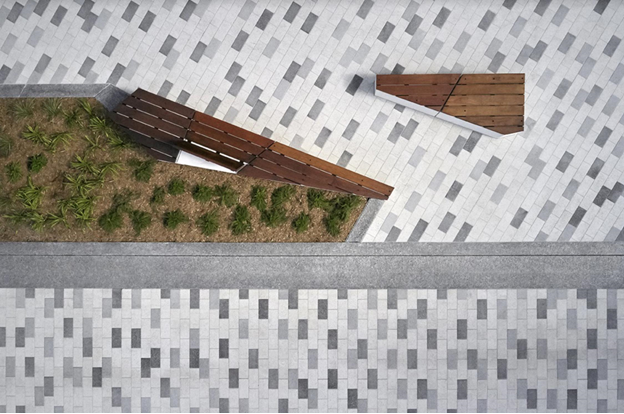When most commercial project stakeholders think about building certifications, they tend to reference LEED, and with good reason. Since its inception in 2005, LEED has become one of the most widely used green building rating systems in the world. What may surprise some commercial and landscape architects is that the exterior design of a commercial space can help a project gain LEED accreditation and/or reach the project's sustainability goals.
Why Commercial Landscape Architects Should Care About LEED Credits
The climate crisis has shifted the long-held beliefs of many in the construction industry. “Crises can also be profound catalysts for change, creating opportunities to gain new perspectives,” according to research from Deloitte.
Those opportunities are abundant for commercial LAs who want to create a future that’s brighter. “Businesses that see climate change — and sustainability — not only as a threat but as an opportunity might be best placed to unlock new innovations and ignite unexpected collaborations. Businesses may need to transform themselves to thrive in an era where tackling sustainability is becoming an imperative.”
The goals set forth by government and global organizations like the United Nations are focused on long-term success. With those goals in mind, the U.S. Green Building Council (USGBC) formed the LEED certification program, which was recently updated from its 2009 program goals.
The LEED accreditation program guides businesses toward meeting more sustainable building and business goals, and by stepping up to help a project meet these requirements, commercial landscape architects can achieve longer-lasting projects and more successful designs.
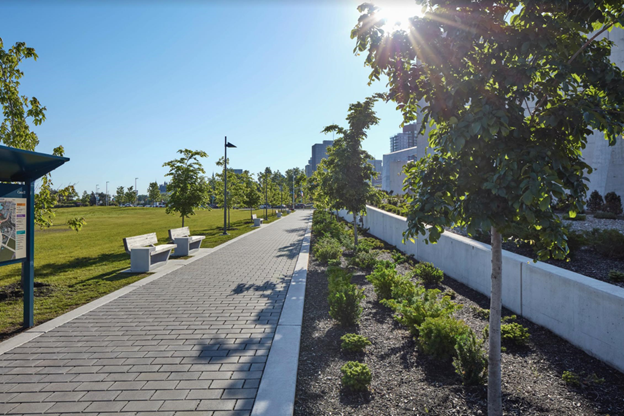
How Can I Help Achieve LEED Certification?
Getting a project LEED-certified helps commercial architects ensure their designs meet the highest standards for sustainable building and brings a great deal of attention to all parties involved including the architect, general contractor and project owner.
By providing guidance around project and performance management, the LEED program offers a framework for green building. The latest version of the framework includes:
- Specification of building materials
- A focus on occupant health and well being
- Building accessibility and community impact
- Weather and natural disaster resilience
“The rigorous focus on material selection, human comfort, air quality and human health features of a building rightly prioritizes the most important asset of the building: human beings,” according to USGBC. Material and water conservation are two large areas of focus, and the USGBC offers tips (and extensive courses) to help both architects and landscape architects find the right strategies for greener building.
Better Ways to Build (and Conserve)
As any professional knows, the only way to achieve LEED accreditation is by planning for it upfront. You’ll never get to the end of a project and suddenly realize that you’ve met the criteria to be LEED certified. But don’t underestimate how much your exterior design can contribute to LEED credits and overall sustainability. There are many opportunities for a more responsible landscape project — one that conserves resources and makes a minimal impact on the environment.
To gain LEED credits, there are a few strategies landscape architects should have in mind before construction kicks off.
- Choose more eco-conscious materials: Products that are locally sourced or made of recycled materials can contribute to LEED credits on a project.
- Think through water management. “Outdoor water use offers the greatest water-saving potential that can be relatively easy to achieve,” according to USGBC. “By utilizing the right landscaping practices, such as planting with nature and adaptive plants, and improving irrigation efficiency, water savings can be effectively improved.”
- Another way to improve irrigation is by rain harvesting through permeable pavements. Rainwater drains into the space between pavers and is channeled into a container for collection.
- Find ways to make your building site more energy-efficient than traditional commercial sites. Avoid the urban heat island effect, where buildings and commercial sites absorb, then reflect the sun’s heat by using low SRI (solar reflectance index) colors.
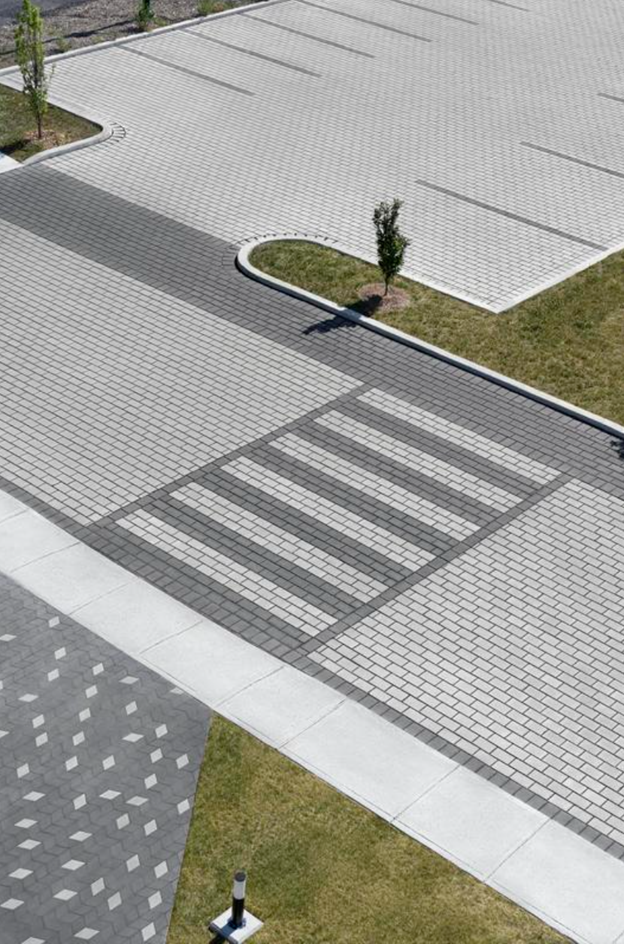
Using the right sustainable products in your commercial site design can help to lower the impact that your building has on natural resources. Techo-Bloc’s pavers give architects a solution for water management and lower solar reflectance, and they are tested and rated to help professionals meet LEED credit requirements.
In fact, Techo-Bloc products can help architects earn points in a few different LEED categories, since they’re made from recycled material, improve energy efficiency and prevent stormwater runoff.
Steps to Design a LEED-Worthy Project
The first step towards a LEED-certified project is working with the right team of creative professionals who all share the same goal of sustainable building. That might mean you will have a different approach to projects if you’re after a LEED certification. But different can be good.
“Success in LEED and green building design is best accomplished through an integrative design process that prioritizes cost-effectiveness over both the short and long terms and engages all project team members in discovering beneficial interrelationships and synergies between systems and components,” according to USGBC.
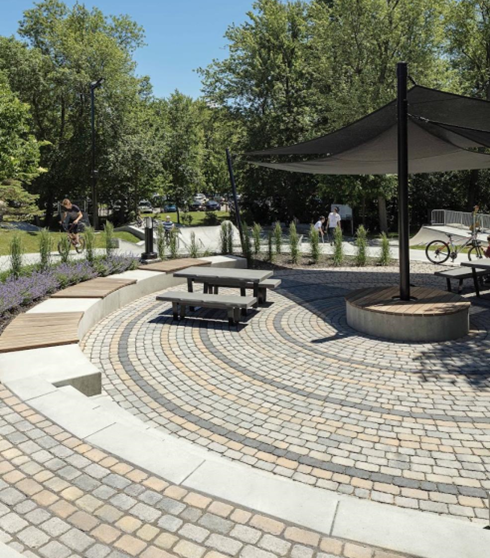
The goal is to design with the intention of making a minimal impact on the planet. It’s important to partner with the right manufacturers and suppliers, so the team uses the right materials and products — ones that count towards LEED points on the project.
There are three phases that USGBC recommends for any team looking for a LEED-certified project:
- Discovery and pre-design: “A project is unlikely to meet its environmental goals cost-effectively without this discrete phase,” according to the USGBC.
- Design and construction: This step is what’s typically referred to as schematic design, and “integrates all the work and collective understanding of system interactions reached during the discovery phase.”
- Occupancy, operations and performance: This is where you’ll measure building performance and create methods for delivering feedback on the project.
The USGBC provides further reference materials, articles and courses so that professionals understand and implement better building practices, to help all of their projects achieve LEED accreditation.
Benefits Beyond Going Green
Besides a greener project that makes a minimal impact on the environment, a LEED-accredited project has a few other benefits.
More sustainable communities and cities: A LEED-certified project is a noteworthy achievement, and many cities will use those projects as a benchmark for improving on local regulations and building standards.
Safer commercial sites: Using materials like Techo-Bloc products are often safer than brick or asphalt, and can create a more accessible building for people with disabilities.
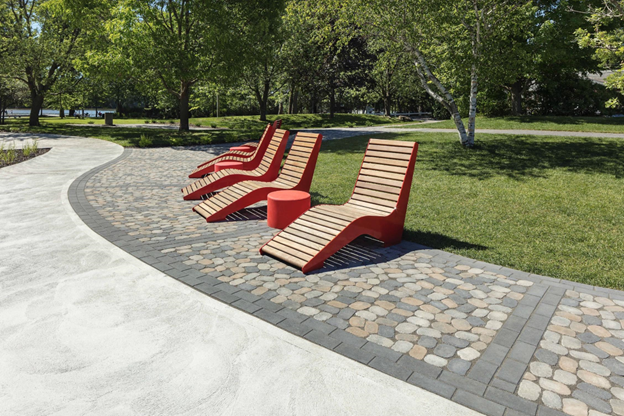
Cost-efficiency: While some products might be more expensive upfront, the life-cycle cost of those materials is typically better than a cheaper alternative. High quality permeable pavements from Techo-Bloc can contribute to LEED credits and likely won’t need to be replaced or repaired — in fact, we offer a warranty on all our pavers.
Healthier, happier building occupants: What’s better for the environment also happens to be better for humans. An eco-conscious and energy-efficient building site is also one that’s just more enjoyable (and comfortable) to be in.
Solutions for Sustainable Commercial Sites
There’s a shift in how the construction industry is approaching commercial projects, and it’s not just because green building is trendy
“Regulations are increasingly supporting the adoption of sustainable business practices,” according to Deloitte. “Governments have numerous regulatory tools at their disposal to shape business practices, and they are increasingly using their regulatory authority to urge companies to adopt sustainable business practices.”
By working towards LEED-accreditation on your project, you’ll also work towards achieving a project that will last. Incorporating more innovative designs and materials helps to ensure the success and advancement of the construction industry and that success translates to happier, healthier citizens.
“The heart of our green building community’s efforts must go well beyond construction and efficiency, and the materials that make up our buildings,” according to the USGBC. “We must dig deeper and focus on what matters most within those buildings: human beings.”
Find out how Techo-Bloc’s products can help you achieve LEED credits on your project through our technical/engineering services page.
For more information on Techo-Bloc's materials and products, please contact your local Techo-Bloc representative.

